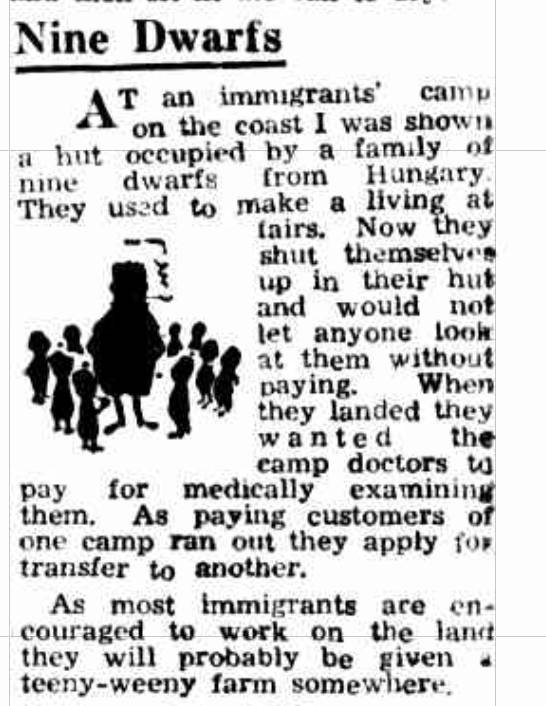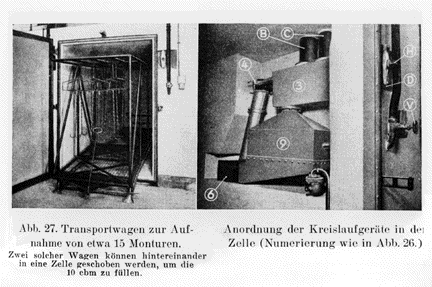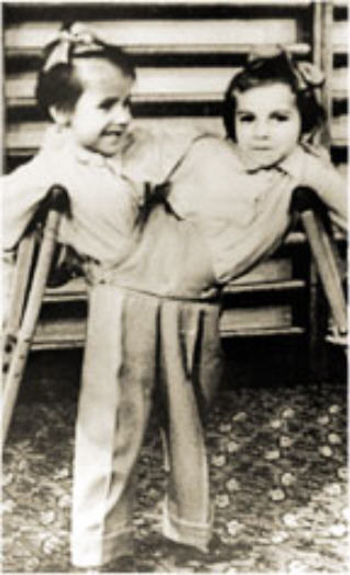hermod wrote:The likelihood of a made-up gas chamber lie is still much bigger than the likelihood of a unique misunderstood hot air delousing.
Yeah of course. Here's another photo of the pair of hot air disinfestation ovens at Birkenau, which I think are incorrectly called steam cleaners or autoclaves on Alamy: [
https://www.alamy.com/stock-photo-laundry-steam-cleaner-autoclave-in-the-laundry-at-birkenau-auschwitz-27328750.html]

When the book "Giants: The Dwarfs of Auschwitz" describes the room where the dwarfs thought that they were gassed, it's said to have looked like a "large washing room", and not like a brick oven:
> A heavy door opened and the wave of stuffy heat assailed their faces. They'd barely crossed the threshold, groping their way inside, when the door slammed behind them.
> It was almost dark and we stood in what looked like a large washing room, waiting for something to happen. We looked up to the ceiling to see why the water was not coming.
But it seems to have been speculation on the part of Negev and Koren that the dwarfs only mistook that they were gassed rather than actually being gassed, or that the mistaken gassing took place in the Central Sauna. So if I continue to play the devil's advocate, it's not unheard of that someone is rescued from a gas chamber because they're called out by Mengele. It happened to Regina Bialek (never mind that she said that the gas came out of the center point of the floor, or that the symptoms she describes don't match cyanide poisoning): [
http://www.bergenbelsen.co.uk/pages/trial/TrialAppendices/TrialAppendices_Affidavits_03_Bialek.html]
> 3. On 25th December, 1943, I was sick with typhus and was picked out at a selection made by Doctors Mengele and Tauber along with about 350 other women. I was made to undress and taken by lorry to a gas chamber. There were seven gas chambers at Auschwitz. This particular one was underground and the lorry was able to run down the slope and straight into the chamber. Here we were tipped unceremoniously on the floor. The room was about 12 yards square and small lights on the wall dimly illuminated it. When the room was full a hissing sound was heard coming from the centre point on the floor and gas came into the room. After what seemed about ten minutes some of the victims began to bite their hands and foam at the mouth and blood issued from their ears, eyes and mouth, and their faces went blue. I suffered from all these symptoms, together with a tight feeling at the throat. I was half conscious when my number was called out by Dr. Mengele and I was led from the chamber. I attribute my escape to the fact that the daughter of a friend of mine who was an Aryan and a doctor at Auschwitz had seen me being transported to the chamber and had told her mother, who immediately appealed to Dr. Mengele. Apparently be realised that as a political prisoner I was of more value alive than dead, and I was released.
hermod wrote:So the answer is no.

From those words, it seems nevertheless that the delousing of the Ovitz dwarfs was carried out by a head shaving and a shower rather than by a passage through a hot air chamber.
For what it's worth, the book "Giants: The Dwarfs of Auschwitz" also says that "In a world of shaven heads and ragged striped uniforms, the Lilliputs' hair and clothes were a shield of protection, for every SS soldier instantly recognised the dwarfs as Mengele's pets, hence not to be damaged."
On the website of CANDLES, the supposed account of supposed Mengele twin Esther Deutch also says that "Twins kept their dresses; they did not have their hair shorn." [
https://candlesholocaustmuseum.org/file_download/inline/285418be-36a3-4752-9c19-df6ecb6432af] But her story is also full of cliches, such as that she was personally selected by Mengele on the ramp, and that she described Mengele as a "very beautiful man".
The account of Mengele twins Judith and Andrea Silberger also says that "Mengele allowed the two girls to keep their hair and dresses." [
https://candlesholocaustmuseum.org/file_download/inline/62710d32-0cf3-4bd4-9271-9c2146624215] But they were also personally selected by Mengele on the ramp: "When the doors of the cattle car opened at Birkenau, Judith remembered Josef Mengele standing on the platform, pointing to the left and right."
In his biography of Mengele, David Marwell wrote:
> Historian Zdenek Zofka notes that many survivors recall Mengele speaking to them in Hungarian, a language he did not speak but which was spoken by his colleagues, the pharmacist Viktor Capesius and the physician Dr. Fritz Klein. "Often Mengele would be described as tall and blond, when he was only 5ft 8½ inches tall and dark-haired."[31] "Almost all inmates" at Auschwitz, according to Zofka, maintain that they had been selected by Mengele.
> Hermann Langbein, a former Auschwitz inmate and author of the authoritative _People in Auschwitz_, wrote of this phenomenon, which he deemed the "Mengele Effect," a particular form of "memory displacement":
> > Some well-known SS men have been positively idealized after the fact. Thus Fania Fénelon has called Mengele a "handsome Siegfried," and Therese Chassaing writes, "Mengele is immaculate in his belted uniform, tall, with shiny black boots that bespeak cleanliness, prosperity, and human dignity." Elie Wiesel mentions as one of Mengele's characteristic attributes "white gloves, a monocle, and the rest."[32]
> Langbein saw Mengele "almost every day in the office of the SS infirmary where he was doing routine bureaucratic work," and he claims that Mengele never struck him as either attractive or elegant. He never saw him with a monocle. Doris Bergen, describing the work of Israeli historian Na'ama Shik, wrote about the "so-called Mengele Effect," noting that survivors' accounts decades after the fact could be shaped by what "they have read and heard in the meantime."[33]
> Geoffrey Hartmann, who wrote extensively on survivor testimony, observed that "every Auschwitz survivor seems to have gone through a selection by Mengele, as if he manned his post 24 hours a day."[34] In fact, Mengele took his turn at "ramp duty" like the rest of the medical staff in the camp. There is no evidence that he served there more frequently or for longer hours than his colleagues. It does seem, however, as Zofka suggests, that "the name Mengele had become detached from the man" and had become "a synonym" for every doctor at the Auschwitz camp.[35] Similarly, historian Christopher Browning, in describing witness testimony about a selection by Mengele that was proved never to have occurred, called such an encounter with the Angel of Death on the ramp in Auschwitz "one of the most broadly recognized archetypical episodes of the Holocaust, widely disseminated in both books and films."[36]









